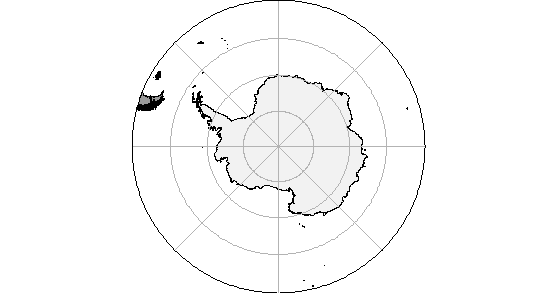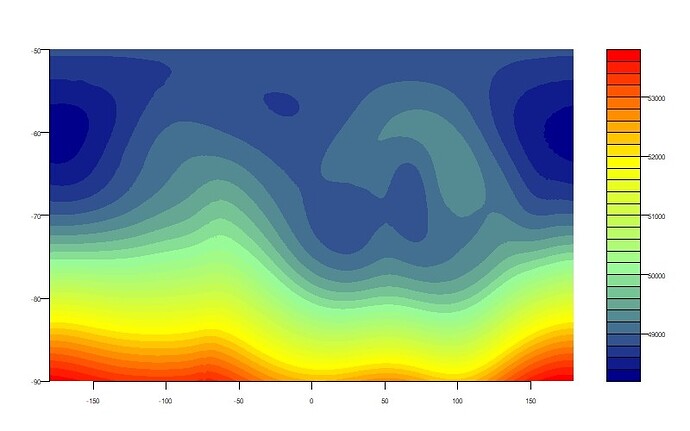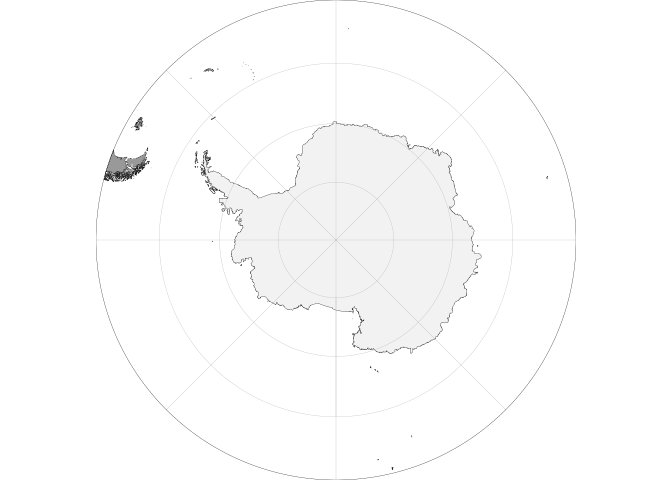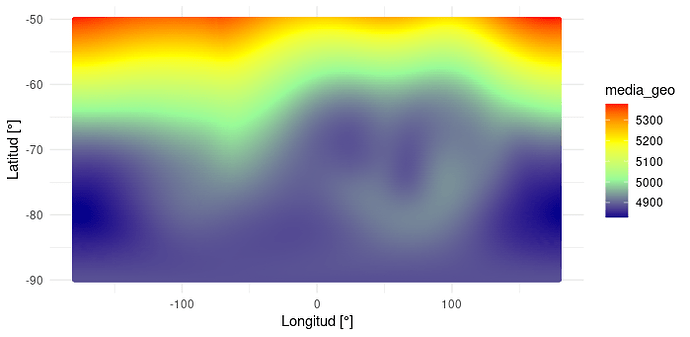I am working with reanalysis data (ERA 5) of 500 hPa Geopotential to analyze Southern Annular Mode patterns in the Antarctic region for the period 1998-2016, specifically the dimensions LON [0, 360°] and LAT [-50, -90°] with a resolution of 0.25°x0.25°. I have a monthly mean data series, so the total dimensions of my original array is: 1440 (LON), 161 (LAT), 228 (time).
Here is the link to my data: nc data - Google Drive
I have managed to plot the data with filled.contour (my target map), but with straight axes, as I show below.
#charge the data
datos_geo <- nc_open("geopotential_antartida.nc")
geo <- ncvar_get(datos_geo, "z")
lon <- ncvar_get(datos_geo, "longitude")
lat <- ncvar_get(datos_geo, "latitude")
py <- c(length(lat):1)
lat <- lat[py]
#make the map
media_geo <- apply(geo, c(1,2), mean)
paleta2 <- colorRampPalette(c("darkblue", "palegreen", "yellow", "red"),interpolate='linear')
par(mar=c(3,3,3,3), mfrow=c(2,1), cex.axis=0.5, cex.lab=0.5, cex.main=0.9, mgp=c(1.5,0.5,0))
filled.contour(lon, lat, media_geo, color.palette=paleta2,
plot.title=title(main="", xlab="Longitud [°]", ylab="Latitud [°]"),
plot.axes={axis(1); axis(2); map("antarctica", wrap=c(-180,180),
add=T, fill=TRUE,border=F, col = "white")})
My goal is to make a filled.contour map (or similar) but radial, and with the Antarctic continent underneath. I have managed to make a radial map, but only with the continent, without plotting my data on top.
Is it possible to plot both together? Thanks in advance.
install.packages(c("ggOceanMapsData", "ggOceanMaps"),
repos = c("https://cloud.r-project.org",
"https://mikkovihtakari.github.io/drat"))
library(ggOceanMapsData)
library(ggOceanMaps)
basemap(limits = -50, glaciers = TRUE, bathymetry = F)



